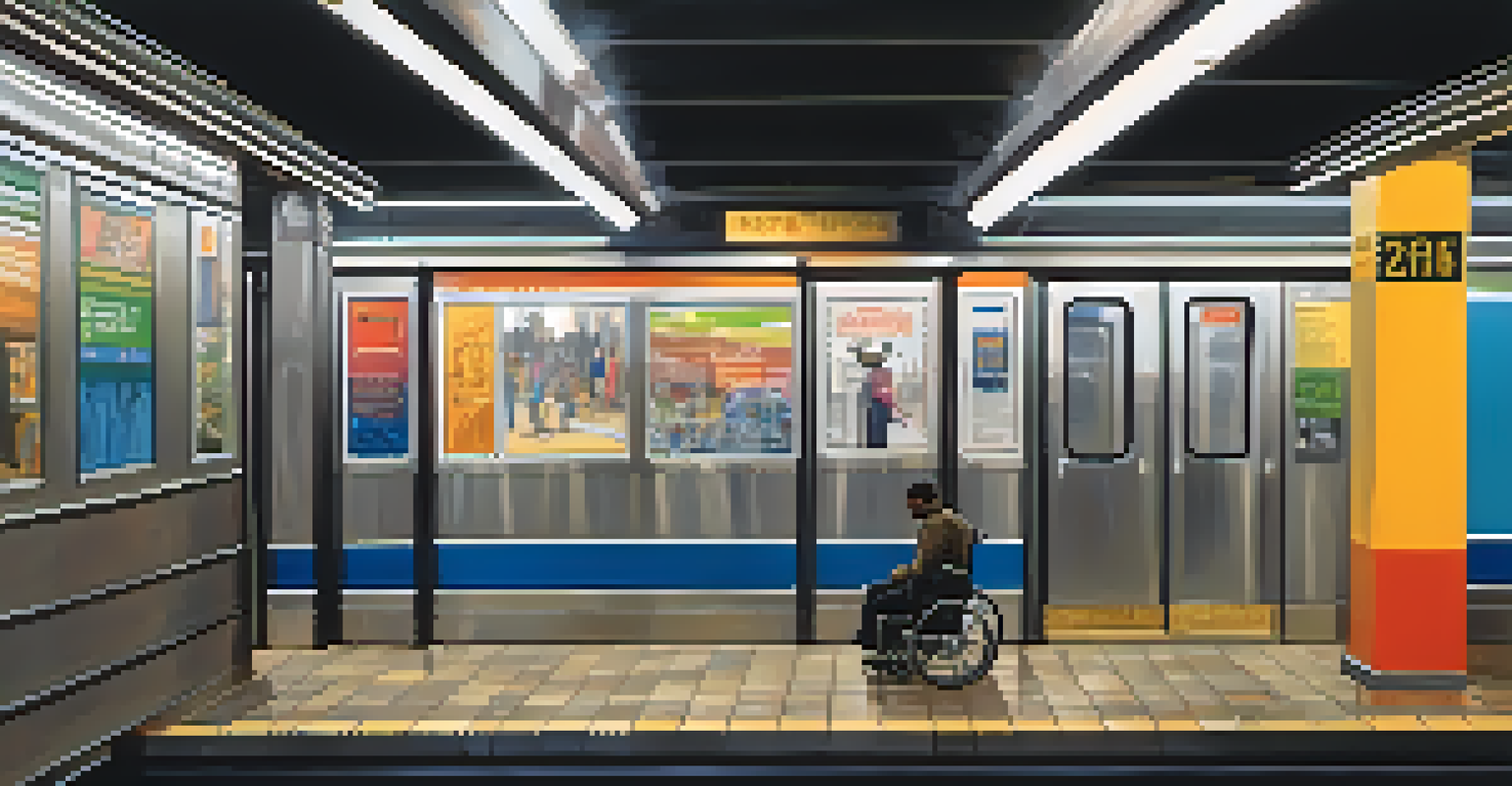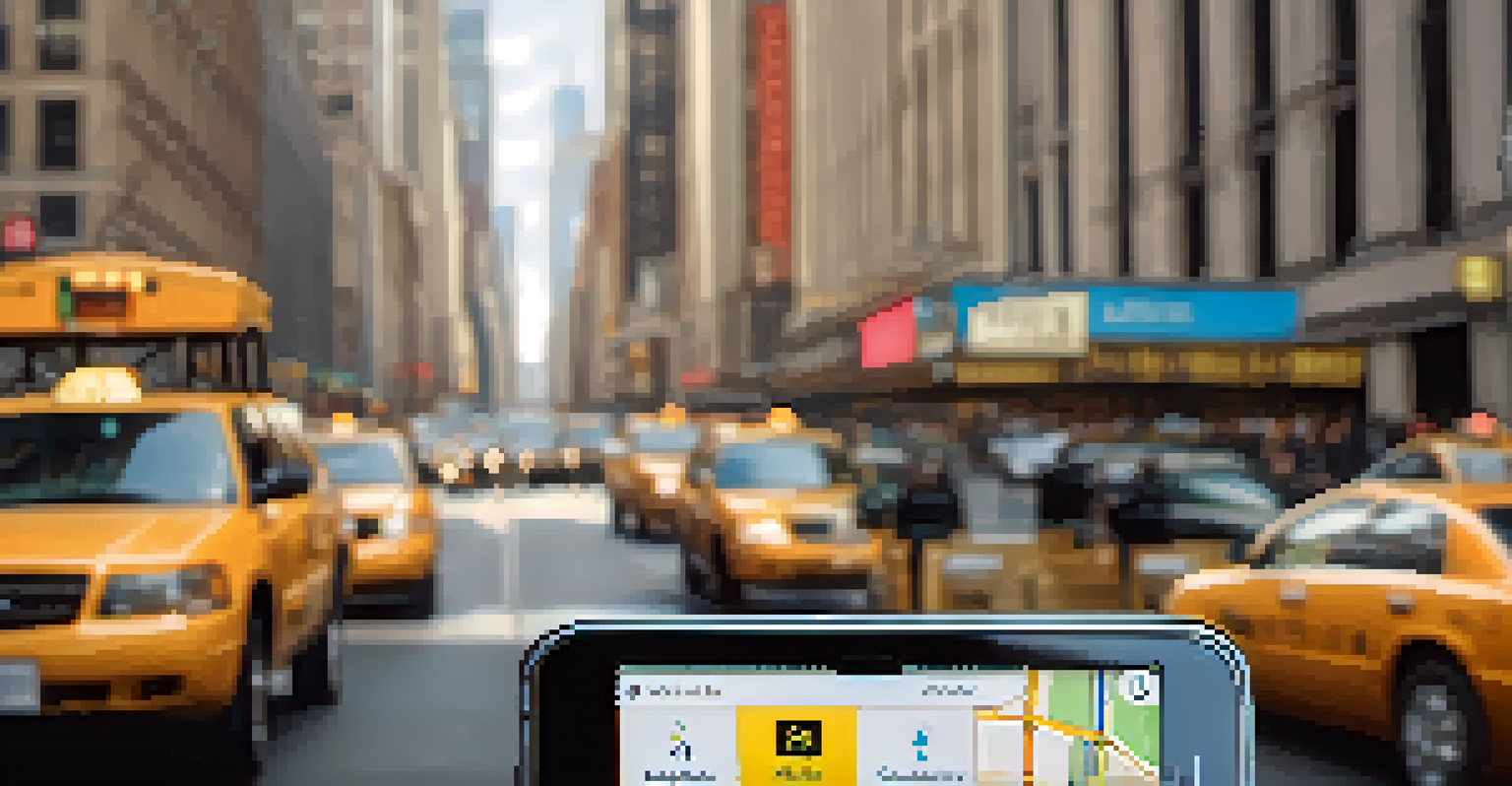The Importance of Accessible Transportation for Disabled NYC

Understanding Accessible Transportation in NYC
Accessible transportation refers to public and private transit options designed to accommodate individuals with disabilities. In a bustling metropolis like New York City, this means ensuring that buses, subways, and taxis are equipped to support those who may have mobility challenges. It’s not just about getting from point A to point B; it’s about fostering independence and inclusion in the city’s vibrant life.
Transportation is the backbone of our society. It connects us to jobs, schools, and the community. Without accessible transportation, we are cutting off opportunities for millions of Americans.
For many disabled individuals, the ability to travel freely can significantly impact their quality of life. Accessible transportation can open doors to employment opportunities, social activities, and essential services. When public transit is accessible, it creates a pathway for disabled individuals to participate fully in the community, which is fundamental to the city’s ethos.
However, the journey to achieving full accessibility is ongoing. While strides have been made, gaps remain in the current transportation infrastructure. This underscores the need for continued advocacy and development to ensure that all residents, regardless of their physical abilities, can navigate the city with ease.
The Legal Framework Supporting Accessibility
In the United States, several laws mandate accessible transportation, including the Americans with Disabilities Act (ADA) and the Rehabilitation Act. The ADA, enacted in 1990, requires public transportation systems to be accessible to individuals with disabilities. This legal framework serves as a foundation for ensuring compliance and providing necessary accommodations.

In New York City, the Metropolitan Transportation Authority (MTA) has made commitments to improve accessibility across its transit system, including retrofitting subways and buses. This includes installing elevators, ramps, and priority seating, all aimed at making public transport more navigable for everyone. However, the implementation of these changes is often slow and requires ongoing monitoring and adjustments.
Importance of Accessible Transit
Accessible transportation is crucial for enabling individuals with disabilities to engage fully in community life and access essential services.
Understanding the legal rights afforded to disabled individuals is crucial for advocacy efforts. By being informed about these rights, individuals and organizations can better push for improvements and hold transit authorities accountable. It creates a united front, driving the point home that accessibility is not just a privilege but a fundamental right.
Challenges Faced by Disabled NYC Residents
Despite the legal frameworks in place, disabled residents in NYC encounter numerous challenges when using public transportation. Many subway stations lack elevators, making it difficult or impossible for those with mobility impairments to access them. Additionally, buses may not always stop at designated locations, further complicating the journey.
The true measure of any society can be found in how it treats its most vulnerable members.
Moreover, there are instances of inadequate training for transit staff, which can lead to misunderstandings or unintentional exclusion. For example, a bus driver might not recognize the need to assist a passenger with a disability, thereby impacting their ability to board safely. These everyday hurdles highlight the pressing need for comprehensive training programs and better communication within the transit system.
The challenges extend beyond physical barriers; they also include societal perceptions and attitudes. When public spaces are not designed with inclusivity in mind, it reinforces the stigma around disability. Promoting awareness and understanding among the general public can play a vital role in creating a more supportive environment for everyone.
The Economic Impact of Accessible Transportation
Accessible transportation is not just a social issue; it’s also an economic one. When disabled individuals have access to reliable transportation, they can contribute more actively to the economy. This includes gaining employment, shopping, and participating in various community activities, which in turn supports local businesses.
Studies have shown that inclusive transportation policies can lead to increased economic productivity. By allowing disabled individuals to travel freely, cities can tap into the talents and skills of a significant portion of the population. For businesses, this means a broader customer base and potentially more revenue, creating a win-win situation.
Legal Protections for Accessibility
Laws like the ADA mandate that public transportation systems must be accessible, serving as a foundation for advocacy and accountability.
Investing in accessible transportation also reduces long-term costs associated with healthcare and social services. When disabled individuals can access jobs and services, they are less likely to rely on public assistance programs. Thus, making transportation accessible is not merely an act of compassion but a smart economic strategy for urban areas.
Innovative Solutions for Improving Accessibility
As technology advances, new solutions are emerging to enhance the accessibility of transportation in NYC. For instance, ride-sharing apps have introduced features that allow users to request accessible vehicles, making travel easier for those with disabilities. This innovation can complement public transit options and provide more flexibility.
Additionally, cities around the world are exploring smart transit systems that utilize real-time data to inform passengers about accessible routes and vehicle availability. By integrating technology into transportation planning, urban areas can create a more seamless experience for disabled riders. This not only improves accessibility but also fosters a sense of independence.
Community engagement also plays a crucial role in developing effective solutions. Involving disabled individuals in the planning and decision-making process ensures that their voices are heard. This collaborative approach can lead to more tailored solutions that truly meet the needs of those who rely on accessible transportation.
Advocacy and Community Involvement
Advocacy is essential for driving change in transportation accessibility. Organizations and individuals can work together to raise awareness, lobby for policy changes, and hold transit authorities accountable. Grassroots movements often lead the charge in pushing for necessary improvements and resources.
Community involvement is equally important. By participating in local meetings, forums, and discussions, disabled individuals can voice their concerns and suggestions. This active engagement fosters a sense of ownership over the issues at hand and encourages collaboration between residents and transit authorities.
Economic Benefits of Inclusivity
Investing in accessible transportation not only supports disabled individuals but also enhances economic productivity and reduces reliance on public assistance.
Moreover, sharing personal stories can be a powerful tool in advocacy. When individuals recount their experiences with transportation barriers, it humanizes the issue and highlights the need for change. This emotional connection can inspire others to take action and support initiatives aimed at improving accessibility.
The Future of Accessible Transportation in NYC
Looking ahead, the future of accessible transportation in NYC hinges on continued commitment and innovation. As urban areas evolve, it’s crucial to prioritize inclusivity in all aspects of transportation planning. This means considering accessibility not as an afterthought but as a fundamental component of urban design.
Emerging technologies, such as autonomous vehicles and smart city initiatives, hold promise for enhancing accessibility. By integrating these advancements with a strong focus on inclusivity, cities can create transportation systems that cater to everyone’s needs. The goal is to build a city where mobility is a right, not a privilege.

Ultimately, the road to improved accessibility is a collective journey. It requires collaboration among government agencies, private companies, and community advocates. By working together, NYC can pave the way for a more inclusive future, ensuring that all residents can navigate the city with dignity and ease.